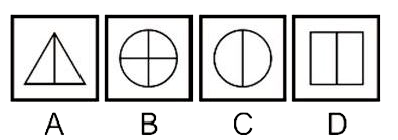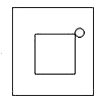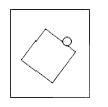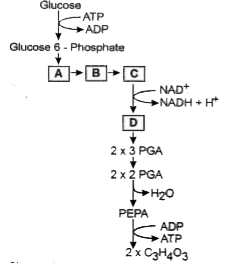Choose the correct sequence of plants through geological periods
A. Chlorophyte Ancestors
B. Tracheophyte ancestors
C. Angiosperms
D. Seed Ferns
D, C, B, A
A. B, D, C
A, D, B, C
B, A, D, C
To determine the correct sequence of plants through geological periods, we need to understand the evolutionary timeline of these groups of plants. Here’s a step-by-step breakdown:
Step 1: Identify the earliest group of plants.
- Chlorophyte Ancestors (A): These are the earliest ancestors of land plants, primarily resembling green algae. They were the first to develop chlorophyll and perform photosynthesis, contributing to the oxygenation of the atmosphere.
Step 2: Identify the next group of plants that evolved.
- Tracheophyte Ancestors (B): Following the chlorophyte ancestors, the tracheophytes evolved. These plants developed vascular tissues, which allowed them to transport water and nutrients more efficiently. This adaptation enabled them to thrive in a variety of terrestrial environments.
Step 3: Identify the group that includes seed-producing plants.
- Seed Ferns (D): After tracheophytes, seed ferns emerged. These plants were among the first to develop seeds, which provided advantages for reproduction and survival in different environments.
Step 4: Identify the most advanced group of plants.
- Angiosperms (C): Finally, angiosperms, or flowering plants, evolved from seed ferns. They are characterized by the presence of flowers and fruits, which aid in reproduction and seed dispersal.
Conclusion:
Putting this all together, the correct sequence of plant evolution through geological periods is:
1. Chlorophyte Ancestors (A)
2. Tracheophyte Ancestors (B)
3. Seed Ferns (D)
4. Angiosperms (C)
Thus, the correct answer is A, B, D, C.
---
- Chlorophyte Ancestors (A): These are the earliest ancestors of land plants, primarily resembling green algae. They were the first to develop chlorophyll and perform photosynthesis, contributing to the oxygenation of the atmosphere.
- Tracheophyte Ancestors (B): Following the chlorophyte ancestors, the tracheophytes evolved. These plants developed vascular tissues, which allowed them to transport water and nutrients more efficiently. This adaptation enabled them to thrive in a variety of terrestrial environments.
- Seed Ferns (D): After tracheophytes, seed ferns emerged. These plants were among the first to develop seeds, which provided advantages for reproduction and survival in different environments.
- Angiosperms (C): Finally, angiosperms, or flowering plants, evolved from seed ferns. They are characterized by the presence of flowers and fruits, which aid in reproduction and seed dispersal.
Putting this all together, the correct sequence of plant evolution through geological periods is:
1. Chlorophyte Ancestors (A)
2. Tracheophyte Ancestors (B)
3. Seed Ferns (D)
4. Angiosperms (C)
Topper's Solved these Questions
Similar Questions
Knowledge Check
- Question 1 - Select One
Find the CORRECT chronological order of appearance of angiosperms
(i) Chloropyte ancestors
(ii) Tracheophyte ancestors
(iii) Psilophyton
(iv) Rhynia type plants
(v) Seed ferns
(vi) ProgymnospermsAi, ii, iii, iv, v, viBi, ii, iv, iii, v, viCi, ii, iv, iii, vi, vDi, ii, iii, iv, vi, v - Question 2 - Select One

Choose the correct picture that fit the blank place

(a)d
(b)c
(c)a
(d)bADBCCADB - Question 3 - Select One
Choose the correct mirror image for the following figure.
 A)
A)
B)
C)
D) A
A B
B C
C D
D
Arrange the following in the ascending order of evolution. a. Zosterophyllum. Br b. Herbaceous lycopods. Br c. Tracheophyte ancestors. Br d. Arborescent lycopods. Br e. Chlorophyte ancestors.
View SolutionWhat is the correct sequence of the evolutionary stage of horse
a. Mesohippus b. Eohippus
c. Equus d. Merrychippus
e. PliohippusView SolutionArrange the following groups of plants in an ascending evolutionary scale: Cycads: Rhynia-like plants: Chlorophyta ancestors: Dicotyledons, and Seed ferns. (in proper sequence)
View SolutionWhich of the following is the correct sequence of inductive method? A. Generalisation B. Observation C. Presentation of examples D. Testing and verification
View SolutionIdentify the correct sequence of the stages in xerarch succession .
(a) Lichen
(b) Bigger plants
(c) Forest
(d) BryophytesView Solution



